But venture a few metres under the surface, as diver and photographer Alexander Semenov did, and you enter the dream-like world of translucent 'lion's mane' jellyfish.
The marine biologist Alexander Semenov has spent more than two years in the hostile environment of the ultra-remote White Sea Biological Station, on the western coast of Russia.
Whenever he gets down-time, he floats his way beneath the surface, to capture images of the beautiful, if occasionally painful, creatures of the deep.
The underwater photographer breaks through arctic sea ice dropping into a cold -2C water - although still warmer than the -30C world up above.
Located in the north east Atlantic Ocean it is twice the size of Denmark and is only recently being explored by divers attracted by its crystal clear waters that allow divers to see an astonishing 40 metres underwater.
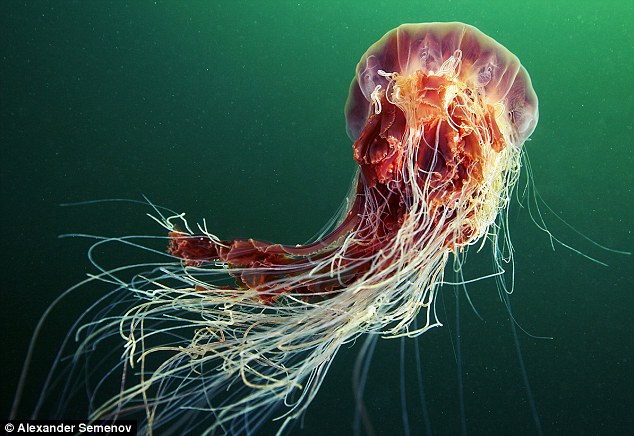
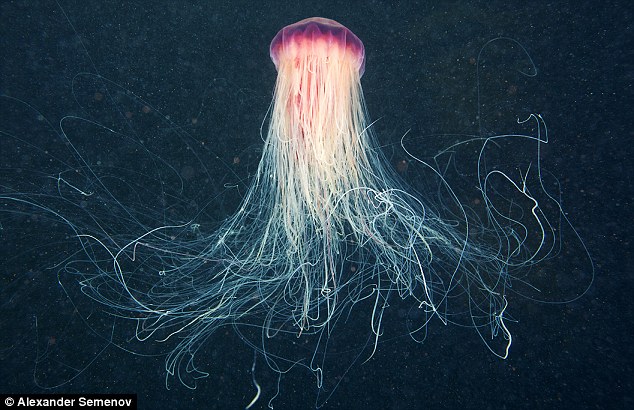
He has documented striking differences between these species who have evolved cut off from their cousins that live in warmer waters elsewhere in the world.
A lion's mane jellyfish can grow big - up to three metres wide at the bell and with tentacles up to 30metres in length.
Indeed, when 150 people were all stung in Wallis Sands State Park in New Hampshire in July 2010, the popular theory is that this was just the remains of one single creature, breaking up in the water and simultaneously stinging a lot of unsuspecting swimmers.
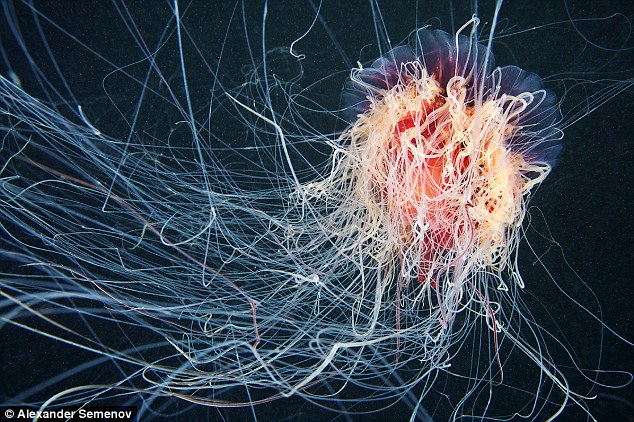
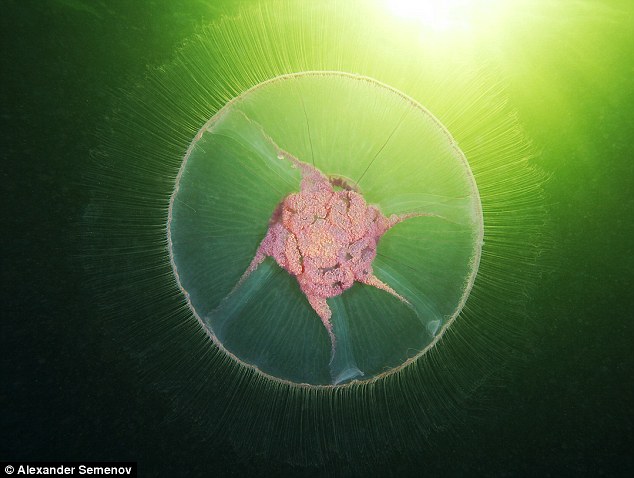
As a lion's mane jellyfish gets bigger, it gets more purple, with tentacles of red - and as it gets older, it can even start consuming other, smaller jellyfish.
But while they grow in the summer, the adults die off in the winter - possibly due to lack of resources or rougher seas.
But for most of their lives, they float, gently pulsating as they hunt for algae and plankton, and offering at least one ice-cool photographer a view that is difficult to forget.
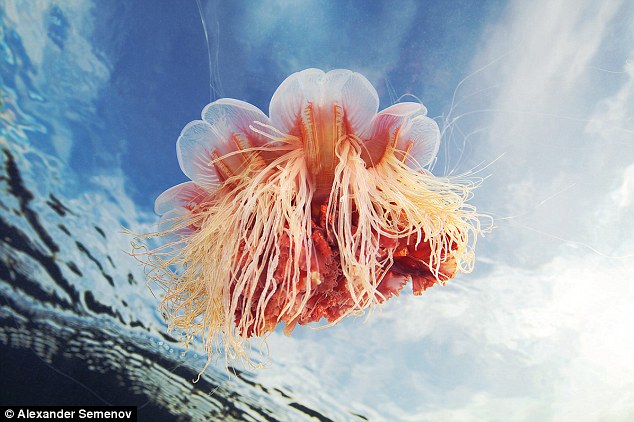
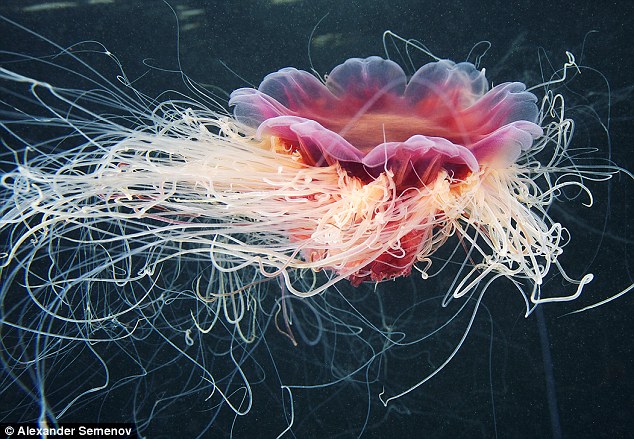
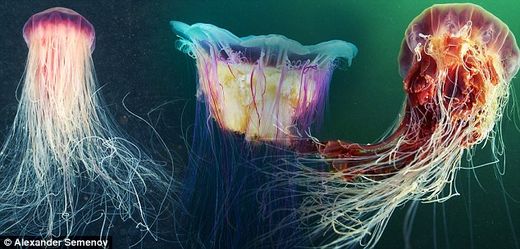
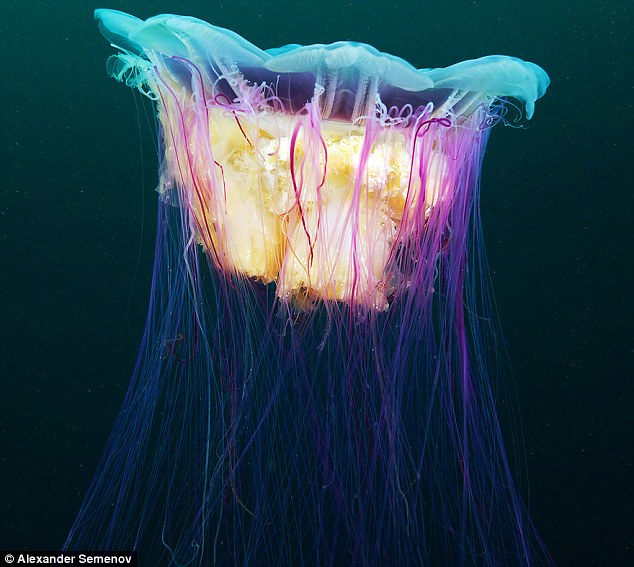



Reader Comments
to our Newsletter